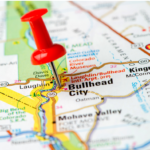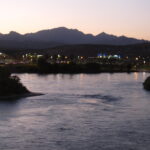Nestled along the banks of the mighty Colorado River, Bullhead City, Arizona, is a place of rich history and vibrant culture. With its stunning landscapes, diverse population, and fascinating past, Bullhead City offers a unique blend of natural beauty and human heritage that captivates both residents and visitors alike. Let’s embark on a journey of exploration to uncover the captivating history and culture that shape this remarkable desert community.
A Glimpse into the Past: Early History
Long before modern civilization set its sights on Bullhead City, the area was home to Native American tribes such as the Mojave and Chemehuevi. These indigenous peoples inhabited the region for centuries, drawing sustenance from the Colorado River and the surrounding desert environment. Evidence of their presence can be found in the form of ancient petroglyphs and artifacts, which provide valuable insights into their way of life and spiritual beliefs.
The arrival of European settlers and American pioneers in the 19th century brought about significant changes to the area. With the construction of Fort Mohave in 1858, the stage was set for increased interaction between Native Americans, military personnel, and new settlers. Bullhead City’s history became intertwined with the expansion of trade routes, mining activities, and the eventual establishment of river transportation.
Riverfront Development and Growth
Bullhead City’s modern history can be traced back to the construction of Davis Dam in the mid-20th century. This dam, completed in 1951, tamed the mighty Colorado River, resulting in the creation of Lake Mohave. The presence of the dam led to the development of infrastructure, including bridges connecting Bullhead City to its neighboring state, Nevada, and the birth of a growing community.
The city’s proximity to Laughlin, Nevada, a popular gambling and entertainment destination, further spurred its development. Bullhead City became a hub for visitors seeking a more tranquil base while enjoying the attractions across the river. This symbiotic relationship between the two communities has contributed to Bullhead City’s unique identity as a place where desert tranquility meets lively entertainment.
Cultural Diversity and Community Spirit
Bullhead City’s cultural fabric is woven from the threads of diversity. The city boasts a population with a wide range of backgrounds and experiences, creating a vibrant tapestry of cultures. This diversity is celebrated through events, festivals, and local traditions that showcase the various ethnicities that call Bullhead City home.
One such event is the annual Bullhead City River Regatta, where residents and visitors gather to float down the Colorado River on a variety of vessels, celebrating the region’s recreational opportunities and fostering a sense of community camaraderie. Additionally, the city hosts art exhibitions, music festivals, and culinary events that provide a platform for local artists and creators to shine.
Preserving Heritage and Looking to the Future
Preservation of Bullhead City’s rich history and cultural heritage is a priority for its residents and local authorities. Museums and historical sites, such as the Colorado River Museum and the Bullhead City Historical Society Museum, provide a glimpse into the city’s past, offering visitors a chance to connect with the pioneers, Native Americans, and other historical figures who shaped its destiny.
As Bullhead City looks toward the future, the balance between growth and preservation remains a key challenge. Efforts to maintain the area’s natural beauty, support sustainable development, and protect the Colorado River’s ecosystem are central to the city’s long-term vision.
Bullhead City, Arizona, is more than just a desert town along the Colorado River; it’s a living testament to the interplay between nature and human history. From its Native American roots to its role in modern riverfront development, the city’s past is a rich tapestry of cultures and influences. As Bullhead City continues to evolve, its residents honor their heritage while embracing progress, ensuring that this unique community remains a treasure trove of history and culture for generations to come.










